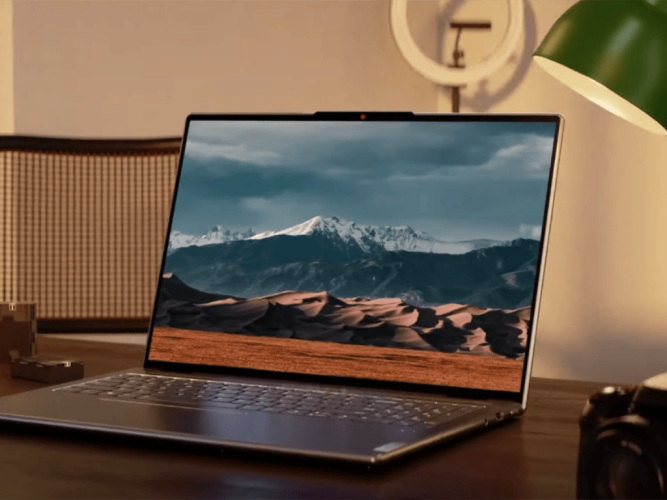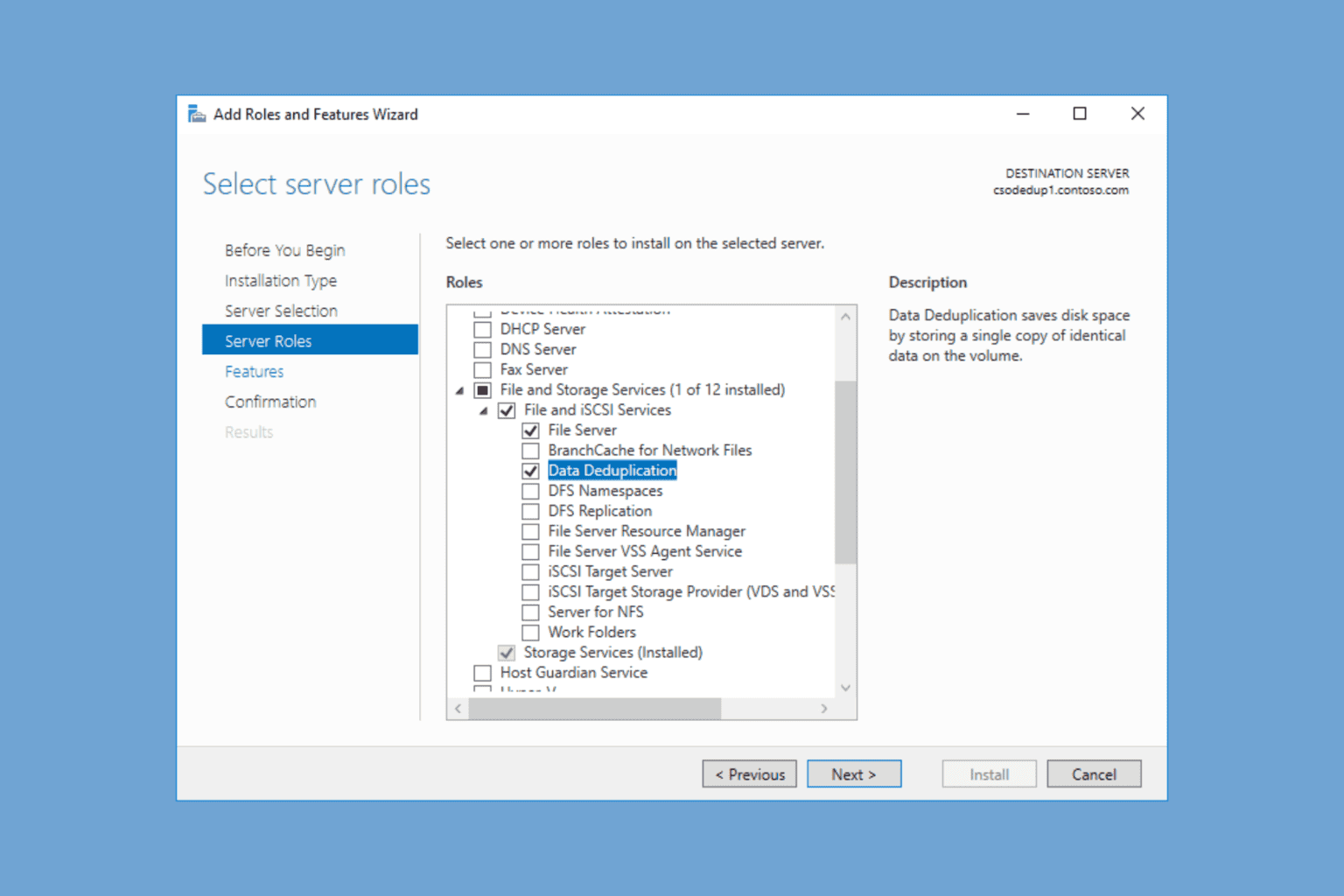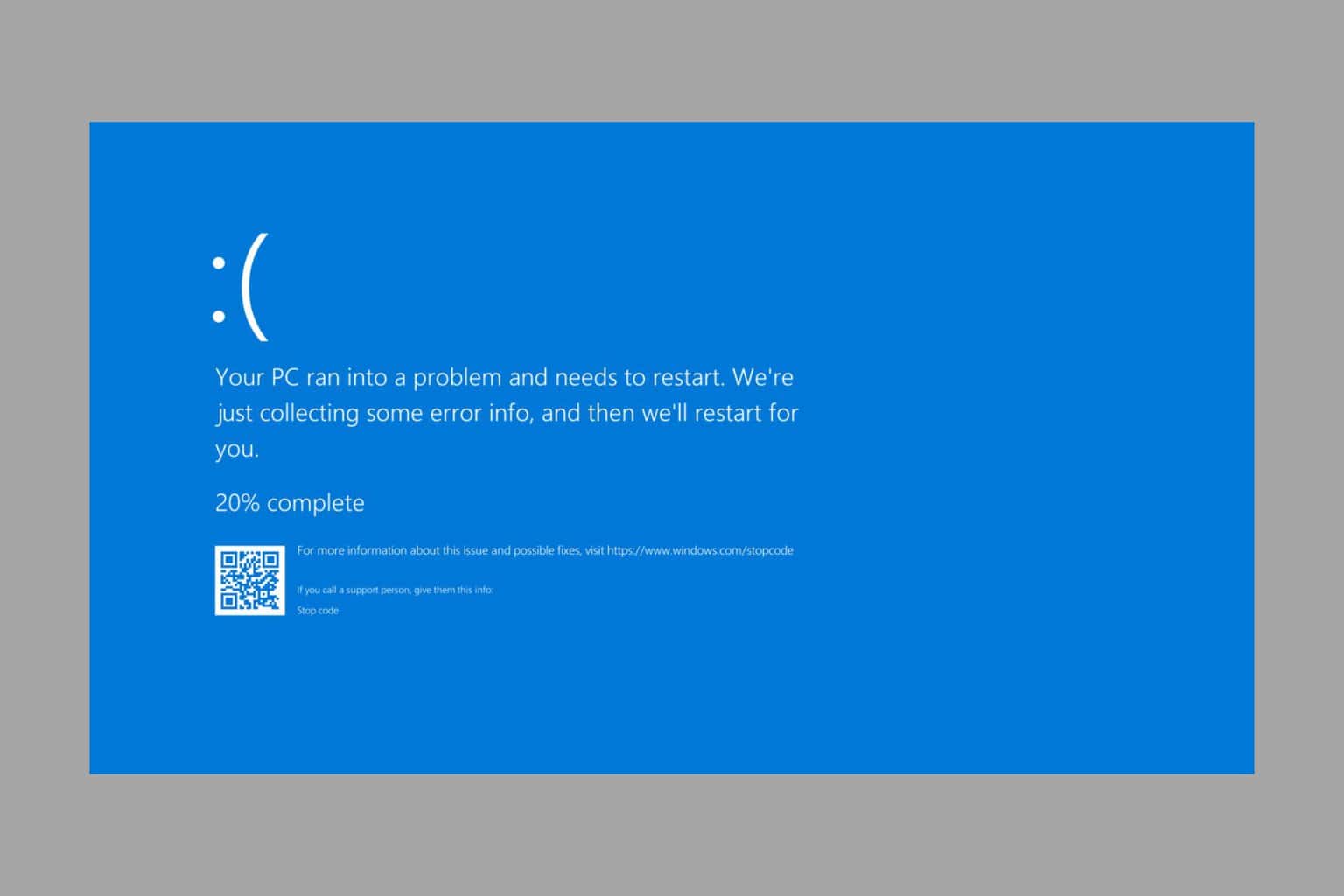Lenovo Yoga 7i 16 Gen 8 Review: More screen for less
8 min. read
Published on
Read our disclosure page to find out how can you help Windows Report sustain the editorial team. Read more

Starting at $799.99
Despite Apple hijacking the narrative this year with their bump in screen size for the MacBook Air, Windows OEMs have known for some time that bigger screens sell, and the Lenovo Yoga 7i 16-inch Gen 8 is among the best deals around.
Starting with a price tag several hundred bucks fewer than a new premium smartphone, the Lenovo Yoga 7i Gen 8 offers a new 13th generation Intel Core processor, 16GB of memory, up to 512GB of solid-state storage, and a vibrant 1920 x 1200 16-inch IPS touchscreen in a convenient foldable form factor.
| Specs | |
| Lenovo Yoga 7i 16-inch | |
| Processor | Up to Intel 12thGen Corei7-1260P |
| Operating System | Up to Windows 11Pro |
| Display | 16″ 2.5K LCD (2560 x 1600) IPS, 400 nits, 100% sRGB, 60 Hz, 16:10, Low Blue Light |
| Storage | Up to 1TB PCIe NVMe |
| Graphics | Intel Iris XeGraphics |
| Camera | 720p HD f2.0 camera (front-facing) |
| Memory | Up to 16GB LPDDR5 |
| Dimensions | 12.47″ x 8.67″ x 0.68″(361.51mm x 249.65mm x 19.20mm)1.9kg / 4.19lbs |
| Audio | 2 x 2W user-facing tweeters and 2 x 3W woofers Dolby Atmos Speaker System |
| Weight | 2.44 lbs (1,110 g) |
| Color | Colors: ArcticGrey or StormGreyDisplay cover: AluminumBottom: Aluminum |
| Ports/Slots | 1 x USB-A (USB 3.2 Gen 14)2 x USB-C (Thunderbolt™ 4.0 / PD /DisplayPort™ / USB 4.0)1 x HDMI™ 2.01 x Full-size SD Card Reader (UHS-1(104) PCIe Gen 1)1 x USB-A (USB 3.2 Gen 1)1 x Audio Combo Jack1 x Power Button |
| Battery | 71Whwith Rapid Charge Express (3 hours battery life in 15 min) |
| What’s in the box | 6-row, multimedia Fn keys, LED backlight Precision Touchpad |
Look and Feel
Aside from the sheer footprint of the Yoga 7i 16, the first thing customers are greeted with is Lenovo’s new consumer facing hardware redesign its labeled Comfort Edge, which rounds all the adorns all the corners and sides of the laptop with a polished rounded profile. Lenovo’s Comfort Edge design is now in its third year of being rolled out to the company’s consumer-facing laptops and still feels very modern and somewhat aspirational in a sea of harder-edge laptops such as the XPS line up or the HP Spectre devices.
The intent of the design is presumably to make Lenovo’s laptops easier to hold in hand, and while the Yoga 7i 16 is technically a folding 2-in-1 meant to be held as tablet in some instances, the 4.5lbs or 2.04kg brick won’t get much extended use in the Yoga’s coveted Tablet-Mode.
Never the less, the design of the aluminum alloy chassis is just as sturdy as its predecessor and cousin devices that utilize the same Comfort Edge design, however, the 2023 model does tweak the area around the bottom of the screen connected keyboard to reduce thickness ever so slightly as well as Lenovo omitting the speaker grilles that were present on the 2022 models.
In both the Artic and Storm Grey color options, fingerprint-smudge management is relatively easy. Fingerprints are rarely shown in most lighting conditions and can be easily wiped away with a napkin or microfiber cloth.
As for the port selection, the 7i 16 offers the same great selection as its 2022 model minus a full-sized SD reader. In 2023, 7i 16 owners get a 1.4b full HDMI port, 2 Thunderbolt 4 USB-C slots, a MicroSD reader and 2 USB-A 3.2 ports, along with a 3.5mm headset/mic combo.
Despite only offering a microSD solution, the 7i 16 still provides similar reads and writes with 60 to 90MB/s.
Unfortunately, Lenovo continues to put vents directly under the keyboard which tends to heat up knees and thighs when using the 7i 16 out and about as well as pushes hot air on to the top of the laptop in tablet mode. I would love for the Comfort Edge design 2.0 to try circulating the air through the back and sides of the device which could prevent the vents from being blocked in position the Yoga adopts, but that’s a gripe for another time.
When the lid is open, customers are greeted with a large 16-inch, 1200p, 10-point touch screen which offers a slightly lower resolution than last year’s at 1600p. Lenovo also skimped on the sRGB calibration as well as brightness, perhaps to reach its new budget-friendly pricing. While notebook reviewers alike will keenly point out the slightly perceptible changes to the monitor, most laptop buyers will notice little difference between models while lauding the price difference between it and competing products such as the Galaxy Book 3 Pro 360, Dell Inspirion 16 of Dell XPS 15.
Another nitpick about the display some privileged customers may complain about is the standard 60hz refresh rate in a growing sea of adaptive 90, 120, 165, and 225Hz panels.
The webcam is still a non-starter for seasoned video conferencing individuals as its capabilities remained capped at 2M. The webcam does capture 1080p resolution which is up from its previous 720p ceiling, but there is notable noise in most lighting conditions. Lenovo offers software dubbed Lenovo Smart Appearance which offers a limited selection of tweaks and filters to help enhance the captures but most customers are better off buying a $20 webcam from Amazon for future video conferencing efforts.
Lastly, the backlit keyboard on the 7i 16 is just soft as its 2022 model as it lifts the same design and key travel as the U-shaped chiclet-style keyboard from most Yoga and IdeaPads in the company lineup. The feel of typing on a Level ThinkPad is different than on its consumer Yoga and IdeaPad, minus the full-sized number pad (which I hate).
Performance
Putting these benchmarks into context, the Lenovo 7i 16, performs as well as the previous 2022 model with a few exceptions in regards to battery life and sustained performance.
In day-to-day use for most customers who live in data processing workflows that include email triaging, Excel (or Sheets) reviews, or presentation creation, web browsing, organizing meeting data and marketing material, data analysis or visualization, and more, the 7i performs without a hitch.
Fan noise is relatively low but can kick up when doing a resource intensive task for more than 40 minutes straight such as data cleansing, any type of SQL projects or using multi-tabbed Chrome windows.
For the budget-friendly creatives, while Intel’s integrated 3rd generation Iris Xe graphics aren’t going to turn heads when rendering video edited projects, they tend to hold up on basic to medium level Adobe projects such as single-image multi layered editing in Photoshop with limited filtering, 4 minutes to 45-minute-long video edits with a handful or tracks and Essential graphics applied. Again, the export times will crawl on this device but as for real-time scrubbing and editing, the system holds up well. Anyone looking to get into some After Effects fun will need to look elsewhere.
During most workflows, the heat pushed out from the 7i 16 is noticed to the left side of the device which is where the cooling system is housed. The Yoga 7i 16 remained a few degrees cooler than competitors under sustained loads.
Speaking of sustained loads, Lenovo manages power and performance well when the Yoga 7i is on battery power where performance dips were only perceptible in benchmarks by a handful of points. The Yoga 7i 16 typically shoots to about 4.1GHz and 58W outputs on the start of large tasks and proceeds to stabilize downwards after the laptops core temperature hits about 95 C, which triggers Lenovo’s power management software and ramps down to around 2.6 GHz and 25 W boosts.
While much of the initial software included on the Yoga 7i 16 is bloat and taxed the CPU at startup (uninstall most of it), Lenovo’s power management software has gotten a bit better in 2023 and helps to extend the life of the batter on charge for this device. Battery consumption on the 7i 16 this year has been reduced by about 8 percent and the device runs about an hour and ten minutes longer under similar stress than its 2022 model and even longer than competitors such as the HP Spectre x360 2-in-1 or the Dell XPS 15 which use more resource intensive displays.
Charging speeds varied on the Yoga 7i 16 due to Lenovo’s Vantage software which presumably utilizes some sort of dynamic charging depending on current battery levels and tasks being performed during the charging cycle. Customers should expect normal slow charging to be triggered which can take up to two hours while rapid charge, when triggered, can shorten that cycle by about 30 to 45 minutes.
As for gaming, customers should look to the Lenovo Legion Slim 7i, as this device can handle only a few titles with major resolution tweaks. For the streamers from cloud platforms such as xCloud, the bigger screen will be much appreciated.
Summary
At the end of the day, the 7i is barely considered a spec bump upgrade with performance remaining relatively similar to its previous model and only in certain situations, slightly better than some of its competitors. Lenovo skimped on screen specs to reach a price point many customers will appreciate in the midst of an inflationary economy.
When compared to other devices in the same category, the 7i 16 tends to come in $200 to 300 dollars cheaper in most configurations and offer up a decently calibrated, and wide 16:10 aspect ratio screen that can double as consumption device on the go. If weight, and bleeding edge screen tech aren’t on your shopping bingo card, the Lenovo 7i 16 could serve as your next big screen workstation.














User forum
0 messages